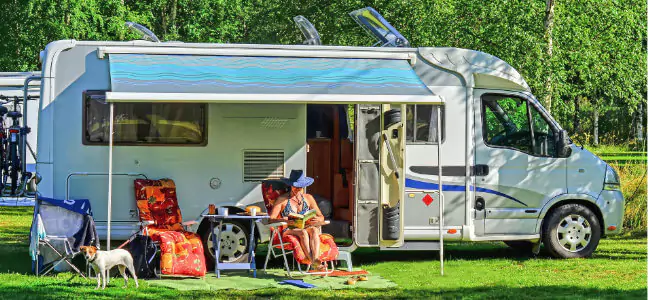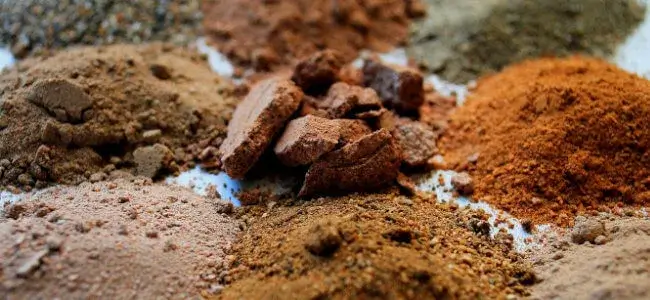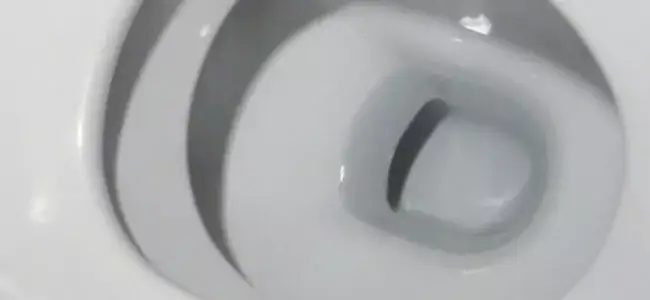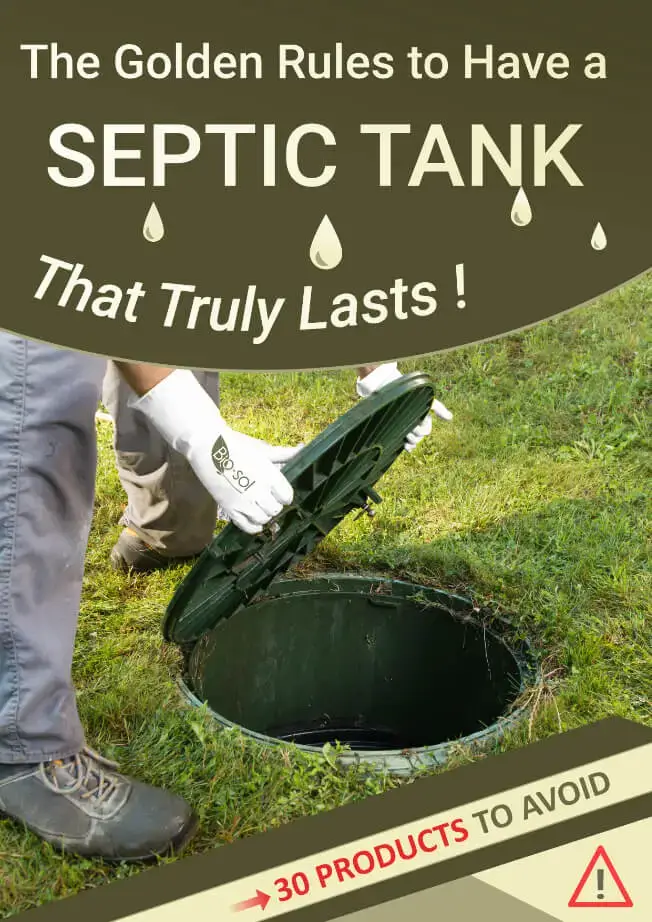Guide for RV septic tank

TABLE OF CONTENTS
A recreational vehicle (RV) usually comes with two kinds of RV septic tanks: a black water tank and a grey water tank. The gray water tank collects the wastewater from your RV sinks and shower. The tank is referred to as a gray water tank because the soap from the sink and the shower gives the water a grayish look. The black water tank is the tank that collects wastewater from your RV toilet. This means the black water tank collects both liquid and solid waste. Some of the older RV models have only one tank that serves both as the grey and black water tank. In such a scenario, all the wastewater should be considered to be black wastewater. Even though both grey and black water drain through the same outlets, they typically have different valves that control their flow into their respective tanks.
Greywater RV septic tanks
As we have established, the grey water tank is the holding tank for all greywater in the RV. Any water that is used in the RV with an exception of the water that is flushed in the toilet is considered greywater. Let’s look at the procedure of emptying the grey water RV septic tank.
Emptying greywater RV septic tanks
Even though greywater is not as toxic as black water, caution should still be taken when emptying it. Some RV owners empty gray water onto the grass, but the best practice is to empty it into a dumping station. It is advisable to empty the grey water tank after the black water tank. This helps to clear any debris that might have been left over from the black water dump. Here are the steps to follow when emptying your tank:
- Wear a pair of disposable gloves
- Hookup your trailer to the dump station with a sewer dump hose
- Open the gray tank valve and wait until it has drained fully
- Run fresh water through the sewer hose
- Put away the sewer dump hose
- Dispose of your gloves safely
Blackwater RV septic tanks
The black water tank collects human waste, the water used to flush the toilet as well as tissue paper. Obviously, you shouldn’t flush anything else or it could block the system and result in a messy backup in your RV. Anything that is not safe for the septic system should also not be flushed in your RV. Before you use your black water tank, make sure it has some water in it. The water helps to absorb the bad odors and it also helps the solid waste to move without sticking on the walls. Because black water tanks in RVs are relatively small and can, therefore, fill up quickly, it is recommended to and Bio-Sol’s Septi RV product. Septi RV is specially formulated to break down the waste in the black water tank while at the same time getting rid of the bad odors. this will give you some extra days of camping before you get back to the designated dumping station for emptying the tank.
Guidelines for emptying black water RV septic tanks
- Protect yourself – the waste from the black water RV holding tanks is quite toxic and it is important to take necessary precautions when emptying the tank. You should protect yourself by wearing rubber gloves, shoe covers as well as protective glasses. Make sure to keep some liquid soap nearby to wash your hands once you are done.
- Prepare to dump – you can only dump at a designated sewer outlet. You can find this at the campsite or in a dumping station. Connect the sewer hose to the RV and then place its end into the sewer opening.
- Empty the tanks – don’t wait until your tanks are full before you empty them.
Important tips when using campground septic systems
It is the responsibility of every camper to take good care of the campground septic system. Here are some helpful tips for properly using the campground septic system.
- Always check to ensure you have latex gloves, a sewer hose, a different hose dedicated for rinsing off the black water tank, and a storage bag for keeping all of these items.
- When purchasing a second-hand RV, cross-check to ensure the sewer hose doesn’t have cracks to avoid leaks.
- Always pull in on the correct side of the campground septic system. Even though most dump stations have 2 sewer access points to allow drivers to pull up on both sides, it is a good idea to think of it as a gas station – the position of the RV tank on your camper will determine which side you should use.
- Check to ensure all valves are closed before you set out. Leaving a valve open can result in a smelly and filthy mess as wastewater splashes all around as soon as you take the cap of the drain pipe.
- Get close to the sewer drain to avoid stretching the sewer hose to its elastic limit. Stretching it too far can result in its disconnection due to the pressure that will be applied as soon as you start emptying the RV tanks.
- Read all the rules of the campground septic system and pay attention to which water is portable in case you need to fill-up again. Use a separate hose for filling up water to avoid contamination.
How often should your empty RV septic tanks?
How long you can use the grey water tank in your RV before dumping the wastewater depends on the size of the tank and the number of users aboard the RV. When at home, the average household consumes 80-100 gallons of water. But in an RV, significantly less water is used. If you were to take two showers in the RV lasting 4 minutes each, then you can expect consumption of approximately 16 gallons of water. Assuming you wash utensils for three meals in your sink, you might use up an additional 6 gallons. Then there is the water you use for washing hands and other miscellaneous uses. So, on average, you can expect 26 gallons of greywater per day. So, assuming your RV has a 25-gallon gray water tank, it would be full in one day. However, if you are at a campground, you will most likely be connected to the campground’s septic system.
In simple terms, if you have lots of people on board, you might need to empty the tank daily. But if you are just traveling alone or maybe with one more person, your tank would need emptying less frequently – maybe even once a week. The rule of thumb is to empty the tank before it fills up. The tank should be emptied as soon as it is two thirds full. This makes it easier to dump because it creates a better flow and it also prevents unnecessary spillage accidents. Most modern RVs have systems that tell you exactly how full the tank is. However, it is safer to keep track of how much water you are consuming because these sensors can get faulty due to wear and tear resulting in inaccurate readings.
Taking care of your RV tanks
Apart from emptying and cleaning the tanks regularly, it is a good idea to avoid using chemicals and other products that might pose a risk to bacteria. Bacteria play a vital role in the RV tanks because it helps in the breaking down of waste. For this reason, avoid using bleach, bronopol, embalming fluid (glutaraldehyde), formaldehyde as well as scented and antibacterial soaps. In fact, any product that shouldn’t be used by septic system owners is also not good for the RV. We have a comprehensive eBook that has all the products that you should avoid with detailed explanations of why. Get the free eBook from our website to learn more. In addition, here are some important tips that will help you to take better care of your RV tanks.
In addition:
- Do not forget to clean the “O” ring seals off the sewer caps. Once cleaned, apply a thin coat of grease on the seals to prevent gray and black water dribbles
- Always add some water into the tank after flushing it. This will prevent any residue in the tank from settling and drying on the bottom of the tank
- Keep your valves closed until when you are ready to pump your tanks. Keeping the valves closed prevents the solids from drying in the tank but it also keeps the bad odors at bay
- Do not pump your tanks prematurely. Wait until they are at least half-full. If you are preparing to leave a site and the tank is not that full, add some water until it is half-way filled. The water in the tank is important because it helps to ensure the solids are flushed out properly.
- Do not use your fresh water hose for dumping your tanks.
- When flushing the tanks, start with the black water tank first and then move to the gray water tank. This will ensure your hose is left as clean as possible.
Conclusion
With proper care and maintenance, the RV septic tank will serve you for many years. However, just like is the case for the home-based septic tank, the RV holding tanks can easily fail if they are neglected. You have to be intentional about taking care of it which includes pumping the tanks as soon as the occasion demands, using biological additives to help break down the waste and avoiding the use of toxic products that might have a negative impact on the efficacy of beneficial bacteria.
OUR LATEST BLOG POSTS

Strange facts about septic systems
If you are a septic system owner, you might have heard all manner of myths. For instance, there is a common myth that throwing a dead cat in the septic tank can help rejuvenate bacteria and thereby make the septic tank more effective. But is this even true? In this article, we will not only answer that […]

Soils types and their impact on septic systems
SOILS TYPES AND THEIR IMPACT ON SEPTIC SYSTEMS However good your septic system is, it depends on the right soil type to complete the process of purifying the wastewater from your home. The soil type in the drainfield area will determine how well the effluent is filtered and if the water that is sent back to the […]

Avoid flushing these if you have a septic tank
Most homeowners wrongfully assume that their toilet can serve as some sort of garbage disposal. As a result, they end up flushing all manner of things in the toilets. Some of the things that are flushed down the toilet are actually innocent mistakes because homeowners think that is the right way to dispose of the products while in other cases, it is just a don’t care attitude. Whichever the case may be, flushing some of these things can result in septic system failure and it could cost you a fortune. We have rounded up some of the commonly-flushed products that you should never flush if you have a septic system.
PERFECT! I WOULD NEED...
Discover which products are the best for your needs!You can contact us at 1-800-378-6132 (toll free) or click on the following button to access our free online evaluation.
GET A QUOTE ONLINELog in to your account
Whoops! It happens sometimes...
CREATE A NEW ACCOUNT
CONGRATS!
You are now registered and ready to go. You can add and change any of your information on your client profile.
Unfortunately, we do not ship our products to the USA at the moment.
But, if you live in the United States and would like to order them, please fill in the form below. You will then be notified as soon as they are available in your country.
Thank you for your understanding!
Malheureusement, nous n’expédions pas nos produits en France pour le moment.
Mais, si vous êtes résident français et aimeriez les commander, remplissez s’il vous plaît le formulaire ci-dessous. Nous pourrons ainsi vous aviser aussitôt qu’ils seront disponibles dans votre pays.
Merci de votre compréhension!

-
30 products to avoid
-
What to replace them with
-
And everything you should know about your septic system
DOWNLOAD THIS FREE EBOOK!
Which email address should we send it to?


